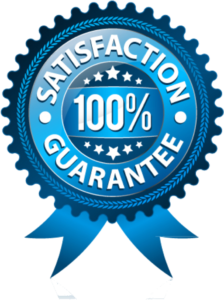Which of the following is not or are not key attributes of supply chain management?
Which of the following is not or are not key attributes of supply chain management?(Points : 3)
Inventory control
Leveraging technology
Customer power
A long-term orientation
All are key attributes.
Question 2.2.(TCO 2) The movement and storage of materials into a firm refers to(Points : 3)
physical distribution.
materials management.
materials handling.
inbound logistics.
outbound logistics.
Question 3.3.(TCO 2) An organizations
ability to respond to changes in demand, with respect to volume and
variety, refers to _.(Points
: 3)
responsiveness
leanness
agility
relevancy
Question 4.4.(TCO 2) Cooperative supply
chain relationships developed to enhance the overall business performance
of both parties is a definition of (Points
: 3)
third-party logistics.
supply chain collaboration.
dovetailing.
relationship marketing.
Question 5.5.(TCO 1) Stocks of goods and
materials maintained for satisfaction of demand are known as (Points : 3)
supply chain.
inventory.
safety stock.
inventory management.
None of the above
Question 6.6.(TCO 1) The reorder point (ROP)
is defined as the (Points : 3)
point used for calculating
safety stock.
highest inventory level
allowed.
lowest inventory level
allowed.
fixed level of inventory at
which a replenishment order is placed.
None of the above
Question 7.7.(TCO 1) _ stock refers
to inventory en route between various nodes in a logistics system. (Points : 3)
Base
Safety
Pipeline
Speculative
Page 2
Question 1.1.(TCO 3) Rate structures
deal with three factors. Which of the following is not one of them? (Points : 3)
Shipment weight
Shipment distance
Product
Shipment direction
Question 2.2.(TCO 3) Based on cost,
speed, and capacity, which of the following modes is most suitable for
high-value, low-volume products (may be perishable or otherwise require
urgent delivery)? (Points : 3)
Pipelines
Air freight
Motor carriers
Railroads
Question 3.3.(TCO 3) Of the modes with
vehicles, _ offer the greatest capacity (volume that can be carried
at one time). (Points : 3)
railroads
water carriers
motor carriers
airlines
4.(TCO 4)
Discuss the advantages and disadvantages of grid systems, such as the
center-of-gravity and the weighted center-of-gravity approaches. (Points : 5)
Question 5.5.(TCO 3) How are carriers legally classified? (Points : 5)
Question 6.6.(TCO 6) What is order management? (Points : 5)
Question 7.7.(TCO 5) According to the text, why is
labeling necessary? (Points : 5)
Question 1.1.(TCO 2) Which of the
following is not or are not key attributes of supply chain management?(Points : 3) Inventory control
Leveraging technology
Customer power
A long-term orientation
All are key attributes.
Question 2.2.(TCO 2) The movement and
storage of materials into a firm refers to(Points : 3) physical distribution.
materials management.
materials handling.
inbound logistics.
outbound logistics.
Question 3.3.(TCO 2) An organizations
ability to respond to changes in demand, with respect to volume and
variety, refers to _.(Points
: 3) responsiveness
leanness
agility
relevancy
Question 4.4.(TCO 2) Cooperative supply
chain relationships developed to enhance the overall business performance
of both parties is a definition of (Points
: 3) third-party logistics.
supply chain collaboration.
dovetailing.
relationship marketing.
Question 5.5.(TCO 1) Stocks of goods and
materials maintained for satisfaction of demand are known as (Points : 3) supply chain.
inventory.
safety stock.
inventory management.
None of the above
Question 6.6.(TCO 1) The reorder point (ROP)
is defined as the (Points : 3) point used for calculating
safety stock.
highest inventory level
allowed.
lowest inventory level
allowed.
fixed level of inventory at
which a replenishment order is placed.
None of the above
Question 7.7.(TCO 1) _ stock refers
to inventory en route between various nodes in a logistics system. (Points : 3) Base
Safety
Pipeline
SpeculativePage 2Question 1.1.(TCO 3) Rate structures
deal with three factors. Which of the following is not one of them? (Points : 3) Shipment weight
Shipment distance
Product
Shipment direction
Question 2.2.(TCO 3) Based on cost,
speed, and capacity, which of the following modes is most suitable for
high-value, low-volume products (may be perishable or otherwise require
urgent delivery)? (Points : 3) Pipelines
Air freight
Motor carriers
Railroads
Question 3.3.(TCO 3) Of the modes with
vehicles, _ offer the greatest capacity (volume that can be carried
at one time). (Points : 3) railroads
water carriers
motor carriers
airlines
4.(TCO 4)
Discuss the advantages and disadvantages of grid systems, such as the
center-of-gravity and the weighted center-of-gravity approaches. (Points : 5)
Question 5.5.(TCO 3) How are carriers legally classified? (Points : 5)
Question 6.6.(TCO 6) What is order management? (Points : 5)
Question 7.7.(TCO 5) According to the text, why is
labeling necessary? (Points : 5)




